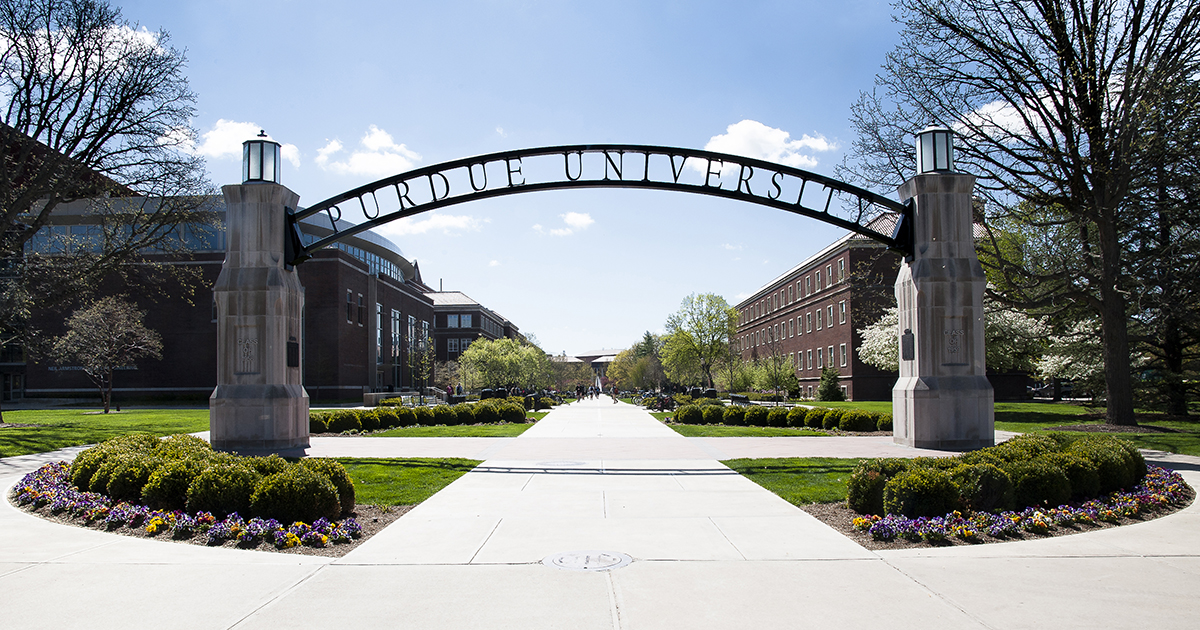Purdue Engineering to play key role in two new SRC JUMP 2.0 centers

Purdue University College of Engineering faculty have been tapped for leadership positions in two new research centers launched by the Semiconductor Research Corporation (SRC) and the Defense Advanced Research Projects Agency (DARPA) to accelerate U.S. advances in information and communications technologies.
The Joint University Microelectronics Program 2.0 (JUMP 2.0) is a public-private partnership co-sponsored by the SRC, DARPA, the commercial semiconductor industry and the defense industrial base. JUMP 2.0 will pursue high-risk, high-payoff research spanning seven thematically structured centers.
According to a release from the SRC, “each multidisciplinary center will focus on one overarching research theme identified as key to addressing emerging technical challenges. These defined interests, spurred by an increasingly connected world and a rapidly changing microelectronics landscape, will centralize long-term, pathfinding research aimed at breakthroughs applicable across defense and academia.”
Purdue faculty, all representing the Elmore Family School of Electrical and Computer Engineering (ECE), will take on lead research roles and lend expertise in semiconductors and hard artificial intelligence to two of the centers, in which investment totals $65.7 million. Both multi-university centers are led by Georgia Institute of Technology.
“Semiconductors and AI are technologies fundamentally reshaping our world and the future of humanity. Purdue is leading the nation in advancing these technologies through transformative investments, research and workforce development powered by our world-class faculty and students,” Purdue President Mung Chiang said. “We are happy to continue our leadership through the SRC JUMP 2.0 program.”
In the Center for the Co-Design of Cognitive Systems (CoCoSys), Anand Raghunathan, Silicon Valley Professor in ECE, is the Purdue principal investigator and associate director. Purdue co-PIs are Kaushik Roy, the Edward G. Tiedemann Jr. Distinguished Professor in ECE; Vijay Raghunathan, ECE professor and director of semiconductor education; and Sumeet Gupta, ECE associate professor.
In the Center on Cognitive Multispectral Sensors (CogniSense), Vijay Raghunathan is the Purdue PI and leader of one of the center’s research themes, and Stanley Chan, ECE associate professor, is the Purdue co-PI.
“The Elmore Family School of Electrical and Computer Engineering at Purdue has a rich history of leadership in SRC-funded research. We are excited that our faculty are key contributors to these new centers that will strongly impact the future of cognitive sensing and computing systems," said Dimitri Peroulis, the Michael and Katherine Birck Head and Reilly Professor in the Elmore Family School of Electrical and Computer Engineering.
CoCoSys’s vision is to enable seamless human-AI collaboration. The next wave of AI will impact everyday lives through collaborative intelligent systems such as digital humans and collaborative robots. These systems will drive unprecedented levels of automation, amplify human capabilities and fundamentally reshape the nature of work, personal life and the human experience itself. CoCoSys researchers will enable human-AI systems through synergistic advances in neuro-symbolic-probabilistic algorithms, technology-driven hardware motifs, algorithm-hardware co-design and collective and collaborative intelligence.
CogniSense addresses the demand for high-quality unobstructed perception for the safe operation of emerging autonomous systems. Current sensing technologies generate unmanageable data volumes and consume too much power. The center’s vision is to develop cognitive multispectral sensors that directly generate trustworthy insight from wideband multimodal analog signals. By designing sensors that dynamically adapt to “what is being sensed” and “how sensed signals are processed” according to real-time changes in the environment, CogniSense research is projected to dramatically reduce the volume of data produced by these sensors.
In 2018, as part of the SRC/DARPA JUMP 1.0 program, Purdue was selected to lead the Center for Brain-inspired Computing Enabling Autonomous Intelligence (C-BRIC). The $35-million center’s mission is to deliver key advances in cognitive computing, with the goal of enabling a new generation of autonomous intelligent systems.
Source: Purdue Engineering to play key role in two new SRC JUMP 2.0 centers
